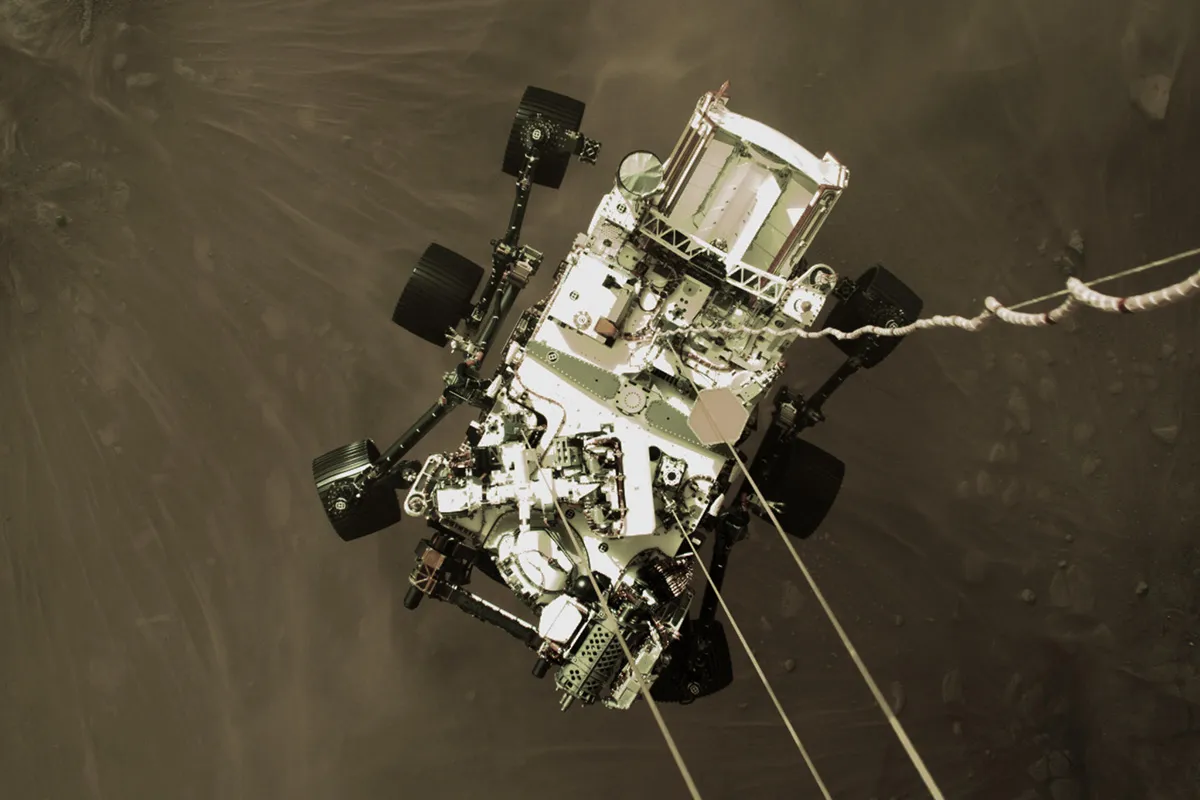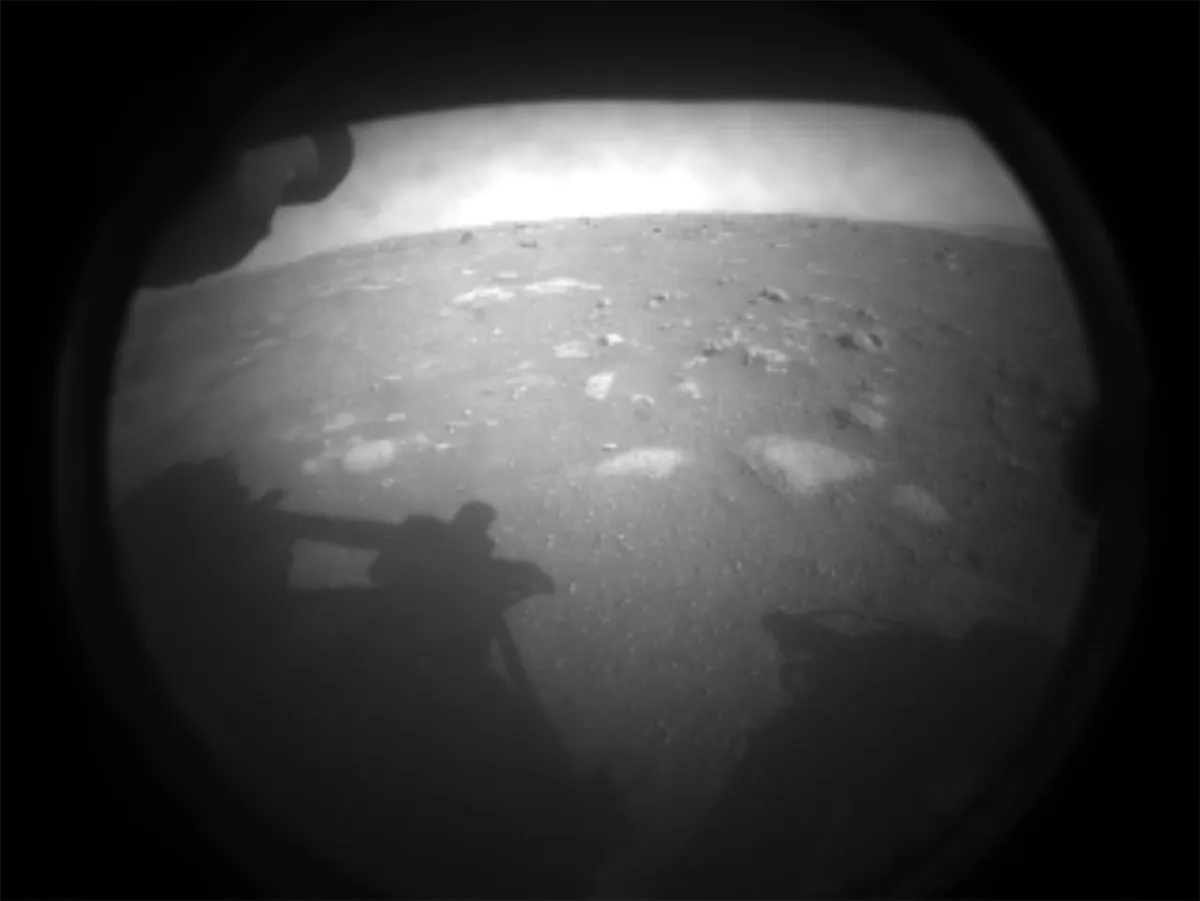NASA has released new video footage that shows the Perseverance rover's successful landing on Mars on 18 February 2021, along with audio revealing the sounds of Mars, captured by a microphone attached to the rover.
The video footage begins during the point at which Perseverance’s parachute deploys during its descent, and shows the final moments of the rover’s successful landing in Jezero Crater on the Red Planet.
The footage was captured by the spacecraft that delivered the Perseverance rover to Mars and begins 11km above the surface, about 230 seconds after it entered the planet's upper atmosphere
It shows the deployment of the rover’s parachute and the heat shield dropping away, having fulfilled its function of protecting Perseverance from the scorching high temperatures during entry into the atmosphere.
The camera can be seen swaying back and forth as the rover descends towards the surface of Mars. 80 seconds and 2,130 meters later, the descent stage performs the sky crane manoeuvre over its landing site in Jezero Crater.

Then, at the very end of the video, plumes from the rover's engines whirl up dust and pebbles that probably have rested undisturbed for billions of years.
The video ends with Perseverance’s successful landing in the Martian crater.
An audio clip captured by the rover’s microphone on 20 February has also been released by NASA, revealing the sounds of Mars following the successful landing at Jezero Crater.
During the clip, mechanical sounds of the rover can be heard, along with a Martian breeze about 7-10 seconds in.
“This video of Perseverance’s descent is the closest you can get to landing on Mars without putting on a pressure suit,” says Thomas Zurbuchen, NASA associate administrator for science.
“It should become mandatory viewing for young women and men who not only want to explore other worlds and build the spacecraft that will take them there, but also want to be part of the diverse teams achieving all the audacious goals in our future.”

Perseverance is the latest rover to be sent to Mars by NASA. Now that it has safely landed, it will begin its mission searching for signs that the Red Planet may once have hosted life in its ancient history.

